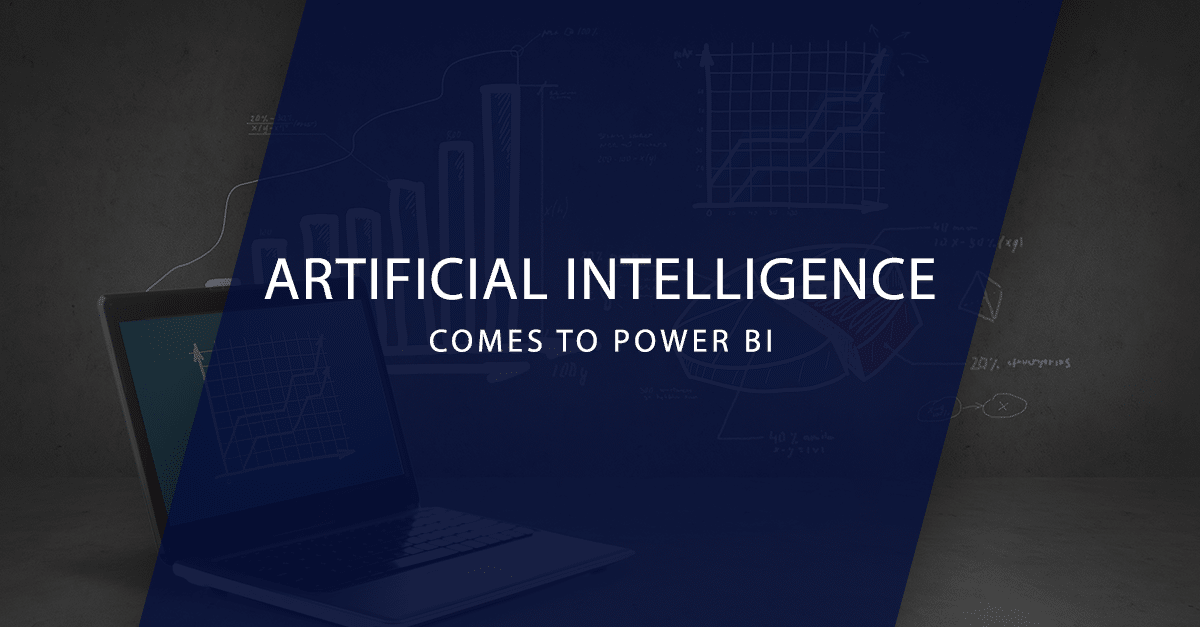Digital marketing is full of data silos with data locked away on separate dashboards making it hard to get a complete picture of an organization’s digital health. There are dashboards for website analytics, paid advertising, social media, and more. Logging into each website to check on key performance indicators is time-consuming and can make measuring or comparing metrics across channels difficult to impossible.
Using Power BI, I can create a single dashboard for my clients to access where they can get a high-level overview of their digital health, then drill-down to examine specific KPIs. While it is easy to create a dashboard with quantitative data, putting numbers on a dashboard for user-generated content, such as customer reviews, has been a manual process. With the introduction of Azure Cognitive Services to Power BI Desktop, that’s changing.
At the time I’m writing this post, the new artificial intelligence features are currently in preview, so you’ll need to enable it in Power BI Desktop. You can read how to do that here.
Artificial Intelligence inside of Power BI is great for marketers
Power BI’s new artificial intelligence features allow users to access text analytics, vision, and Azure Machine Learning capabilities from Power Query to further enrich the data available in their dashboards.
Text Analytics in Power BI
Power BI currently supports Sentiment Analysis, Key Phrase Extraction, and Language Detection.
Sentiment Analysis
In my opinion, this is the most useful AI feature to be added. Sentiment Analysis evaluates text and returns a score from 0 to 1, where 0 implies negative sentiment and 1 implies positive sentiment.
Marketers can now use AI to automatically and rapidly evaluate the sentiment of user-generated content such as reviews and social media posts. This data can be added to other metrics already available in a Power BI dashboard, such as the number of customer service inquiries, to paint a complete picture of a customer’s perception of a brand.
Evaluating sentiment shifts overtime will be particularly valuable to marketers and CEOs looking to improve the customer experience or build their brand.
Key Phrase Extraction
Just as the name implies, Key Phrase Extraction will return a list of key phrases from a block of text. Key Phrase Extraction works best when it is fed bigger blocks of text, whereas Sentiment Analysis works best with small blocks of text. I’ll be interested to see how Key Phrase Extraction does with smaller chunks of text, say, for example, examining tweets and then categorizing them by product offered. Being able to add a data visualization to a Power BI dashboard showing product mentions across social media platforms will be useful.
Language Detection
Microsoft’s AI will recognize about 120 languages at the time I wrote this post. You can find all of the languages currently supported here.
Again, there’s no mystery as to what this AI service does based on the name. Upon receiving a block of text, the AI will determine which language the text is written in and return the language name as well as the ISO identifier to Power Query.
I don’t see an application for this in my regular use of Power BI; I suppose for international brands this might be a useful feature.
Vision in Power BI
Currently, Vision in Power BI is limited to image tagging. Using this AI service, an image will be tagged based on the objects, living beings, or actions contained in the image. Tagging won’t be limited to the main subject of the image – for example, if the image is of a dog outdoors, the tag ‘dog’ and ‘outdoors’ can be applied to an image. Images are sent via Power BI to Azure Cognitive Services as a URL or base-64 field input.
This AI service will be particularly beneficial to marketers who are looking to track the content of user-generated pictures added to services such as Google My Business.
AI Services Require Premium Capacity
While Power BI Desktop is free, using Text Analytics and Vision will require a subscription or premium license to the Power BI service. Like all Microsoft products, licensing, and the associated cost of the license is anything but straight forward. After looking at the documentation for Power BI Premium Capacity I have no clue what type of license would be best for my relatively modest AI needs.
While I’m generally a fan of Microsoft, their convoluted licensing remains a source of frustration, and the addition of artificial intelligence services to Power BI is no exception.
TL;DR – AI will give marketers new data points to make better decisions
The integration of Azure Cognitive Services to Power BI will help marketers be more efficient through the automation of sentiment scores, text classification, and image analysis. These additional data points will help organizations make better data-driven decisions.
Adding artificial intelligence capabilities to Power BI will require a paid license for premium capacity; the complexity of the licensing may be enough to prevent small and medium organizations from enhancing their existing data points with new ones available through AI.

